Visualizations:
Formation of a group of galaxies
Formation of a group of galaxies
Formation of a group of galaxies quite similar to our Local Group in which our galaxy, the Milky Way, is approaching our biggest neighbor the Andromeda Galaxy. The region shown here is 1/10 of the box shown in the filament formation page and is equal to 4.3 megaparsec or 14 million light years. Our "camera" is tracking the progenitor of the group so that it is always new the center of the field of view. The formation of an object such as our Local Group proceeds hierarchically in the Cold Dark Matter models. Small-mass objects form first at z>5, they quickly grow in size and violently merge with each other, creating increasingly larger and larger system. This galactic "cannibalism" persists even to the present day epoch (z=0). Indeed, the two main objects that you can see approaching at z~0, will also merge in about one billion years into the future. Note that many of the "cannibalized" systems do not loose their identity and become satellites orbiting in the gravitational pull of larger systems. The groups like the one modeled in these simulations are very common in the Universe. In fact, up to half of all galaxies are thought to be part of groups of different sizes. You can download the movie as
|


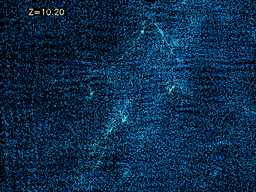

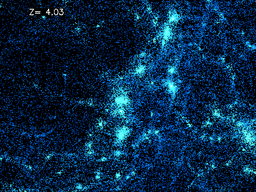
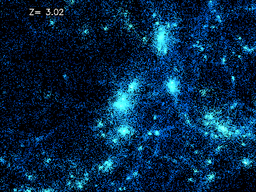
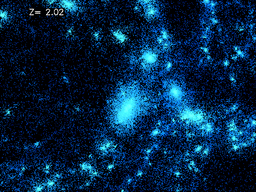


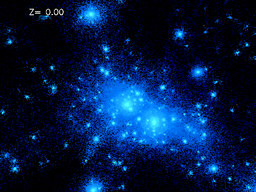
 The Center for Cosmological Physics is a Physics Frontier Center of the National Science Foundation
The Center for Cosmological Physics is a Physics Frontier Center of the National Science Foundation 